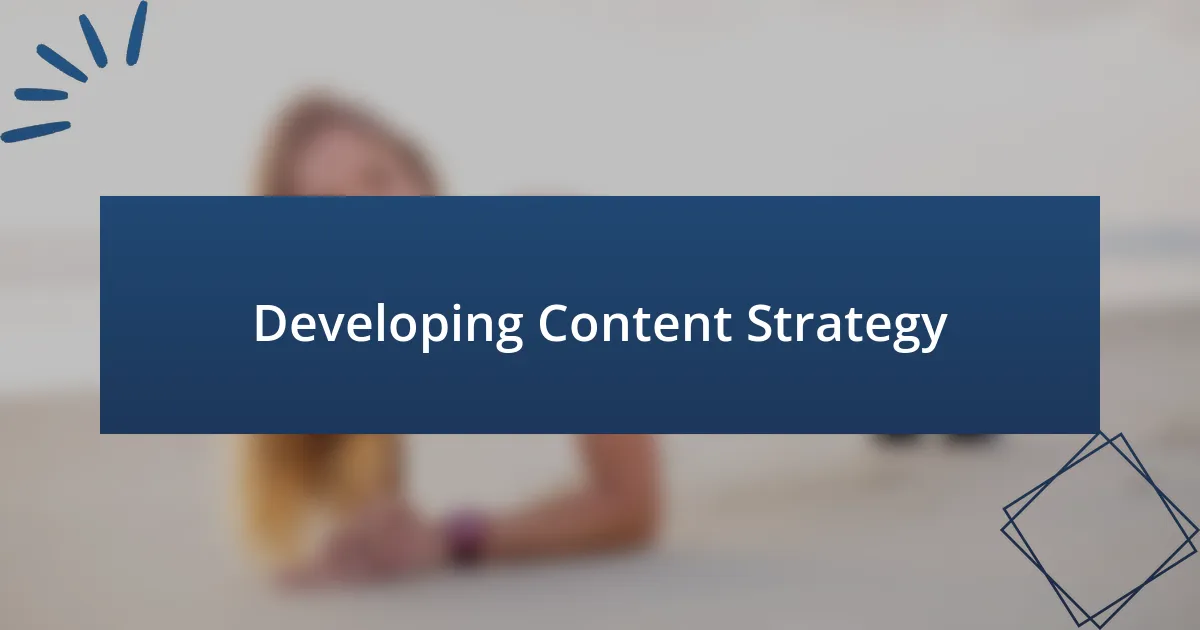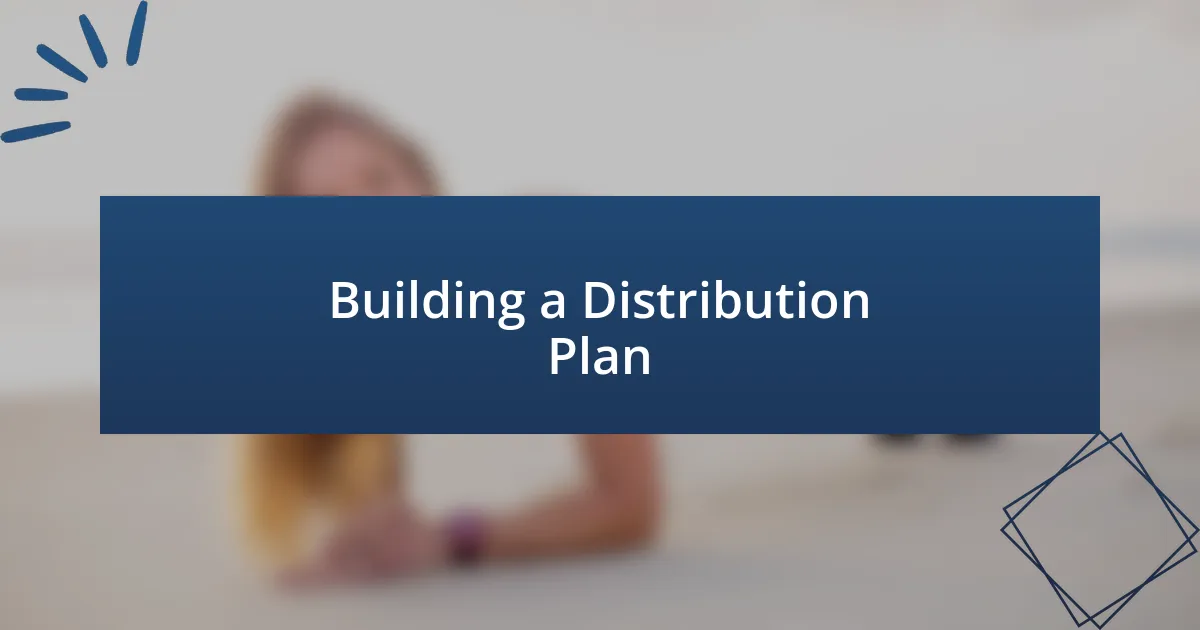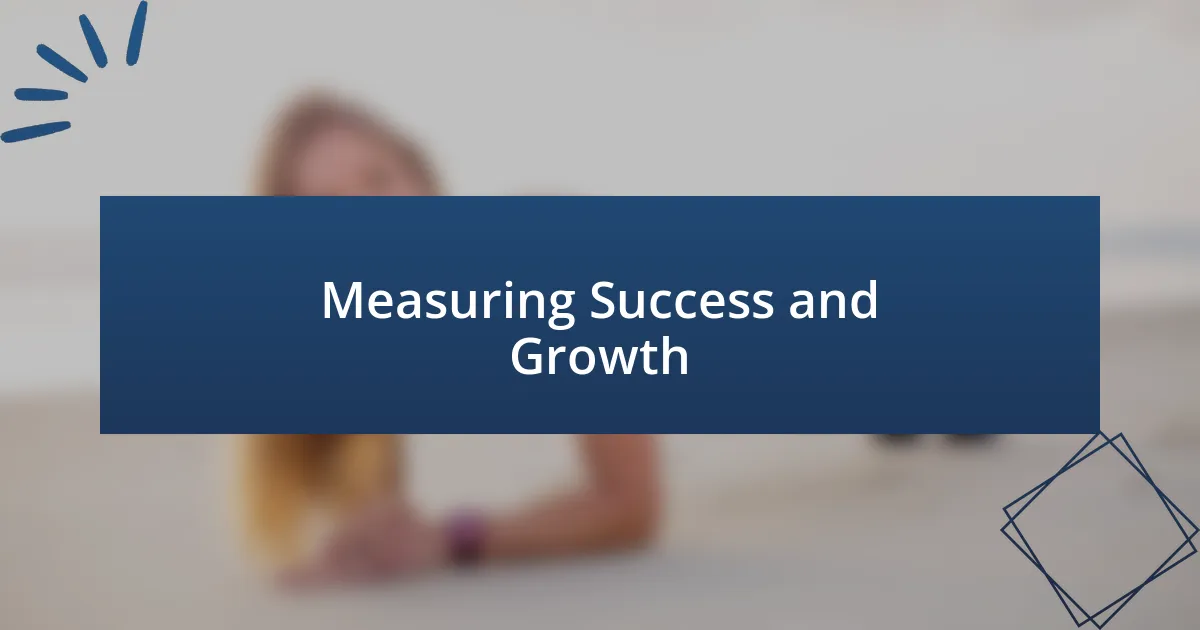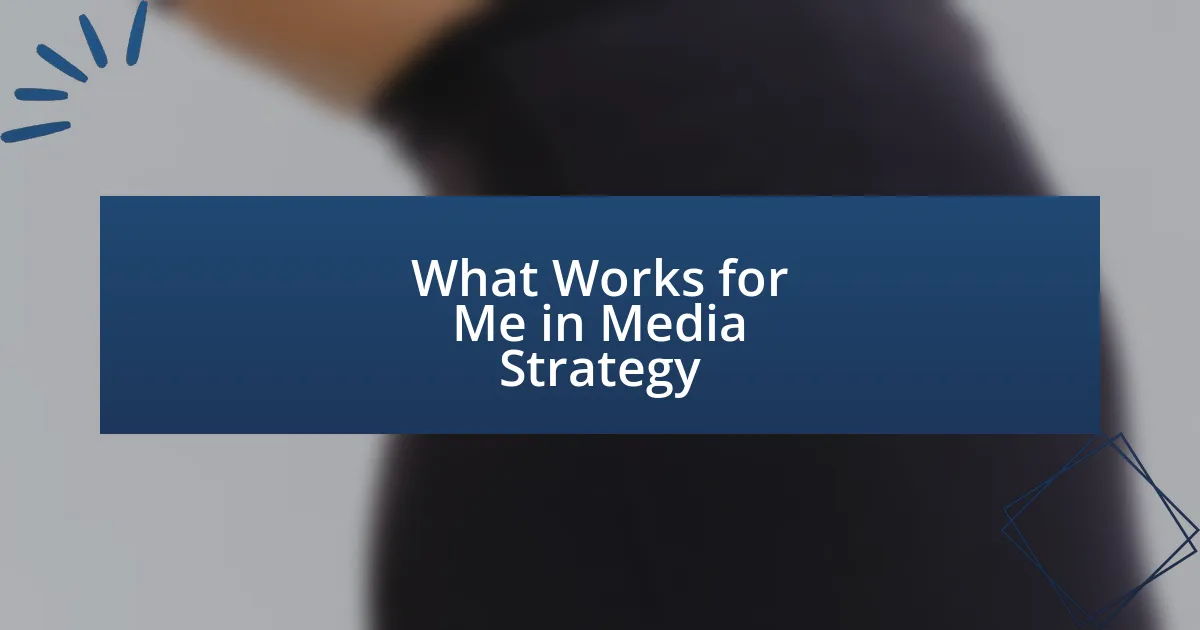Key takeaways:
- Building a cohesive media network requires understanding the unique roles of various communication channels and actively engaging with the audience.
- Identifying and defining a specific target audience is crucial for creating resonant content and developing effective strategies.
- Consistency in messaging and storytelling, along with repurposing content, strengthens audience engagement and trust.
- Measuring success goes beyond follower counts; engagement, audience feedback, and emotional connections are key indicators of growth.

Understanding Media Networks
A media network is essentially a framework that connects various channels of communication, like social media, websites, and traditional outlets, into a cohesive system. I remember when I first started piecing together my network; it felt a bit overwhelming. I often wondered, “Where do I even begin?” Understanding the unique roles each platform plays in the bigger picture helped me find my footing.
What really struck me was how each component of a media network interacts in real-time. Looking back, I realized that those early days of trial and error were crucial. I experimented with different messaging and platforms until I found the perfect fit for my audience, which led me to ponder: How can I create content that resonates while also bridging gaps between these channels?
One of the most rewarding aspects of building a media network is witnessing the growth of connections over time. Each collaboration or partnership I nurtured became a stepping stone for reaching broader audiences. It taught me that meaningful relationships aren’t just advantageous; they’re the heartbeat of effective media networks.

Identifying Your Target Audience
Understanding who you want to reach is foundational when building a media network. Early on, I found myself creating content that didn’t quite hit the mark because I hadn’t identified my audience clearly. It was frustrating to pour time and energy into posts that barely resonated. After some soul-searching and research, I realized I needed to define my target audience more specifically.
To effectively identify your target audience, consider these key aspects:
- Demographics: Age, gender, location, and income level that characterize your audience.
- Interests: What topics or activities energize your potential followers?
- Pain Points: What challenges or problems does your audience face that your content can address?
- Behavior Patterns: How does your audience consume media? Are they more visual, auditory, or written learners?
- Feedback: Actively seek input from your audience to understand their preferences better.
By honing in on these elements, I was able to tailor my content and strategy in ways that profoundly engaged my audience. The transformation was rewarding; it felt like finally striking a chord with a community I had longed to connect with.

Developing Content Strategy
When I started developing my content strategy, I realized it wasn’t just about creating posts; it was about creating a narrative. Initially, I juggled different formats—videos, blogs, and infographics—hoping something would resonate. However, as I started to analyze engagement metrics, it became clear that stories were what truly connected with my audience. Crafting a content calendar around thematic narratives not only organized my thoughts but also kept my audience eagerly anticipating the next chapter.
One critical aspect I learned was the importance of consistency in tone and messaging. Early on, I faced mixed responses when I shifted styles too frequently. It felt liberating to experiment, but the confusion it created pushed some followers away. I discovered that maintaining a cohesive voice strengthened trust among my audience. Now, I focus on a unified theme that reflects my brand’s values, making it easier for followers to relate and engage with my ongoing journey.
Finally, I can’t stress enough the value of repurposing content. I used to dismiss old articles or videos, thinking they were no longer relevant. However, I found that revisiting existing content and presenting it in new formats breathed fresh life into it. For instance, I turned a popular blog post into a podcast episode, and the response was exhilarating. It not only shaped my understanding of audience preferences but also reinforced the idea that the same message can be received differently depending on the platform.
| Content Strategy Element | Details |
|---|---|
| Narrative Development | Creating a cohesive story that resonates with the audience reinforces connection and engagement. |
| Consistency | Maintaining a unified tone builds trust and motivates followers to stay engaged. |
| Repurposing Content | Transforming old content into new formats revitalizes engagement while reaching different audience segments. |

Building a Distribution Plan
Building a distribution plan was one of the turning points in how I connected with my audience. Early on, I threw my content into the ether without much thought to where it would land. I remember feeling disheartened when I realized that just having great content wasn’t enough; it needed a solid delivery mechanism. It made me reflect—how could I truly extend my message if my audience couldn’t find it?
I started mapping out different distribution channels, considering where my target audience spends their time. Social media platforms were an obvious start, but diving into niche forums opened up a whole new realm of engagement for me. I distinctly recall sharing a particularly compelling piece in a community focused on my niche; the discussions that followed not only validated my message but also expanded my network in ways I hadn’t anticipated.
Setting a schedule for distribution proved to be a game-changer. I learned that consistency doesn’t just apply to content creation; it’s equally crucial for getting that content in front of the right people. I devised a simple yet effective calendar that outlined when and where to share each piece. This strategic approach alleviated the stress of scrambling for ideas at the last minute and allowed me to really anticipate audience reactions. How satisfying it was to see the same post circulated over multiple platforms, each time drawing in fresh interactions and sparking new conversations!

Engaging with Your Audience
When I first started engaging with my audience, I discovered that authenticity was key. I remember a time when I posted a candid video about my struggles with content creation. The flood of comments and messages that followed made me realize people crave real connections—they appreciate when you’re open about your challenges. Have you ever felt that rush when someone resonates with your vulnerability?
Building a consistent dialogue with my audience turned out to be another crucial aspect. I began hosting weekly Q&A sessions that allowed followers to ask anything about my experiences. Those interactions not only deepened my understanding of their interests but also fostered a sense of community. It was rewarding to see familiar names pop up repeatedly, each person’s questions reflecting their unique journey.
Creating polls and seeking feedback was a transformative strategy for me. I vividly recall launching a survey on content topics, and the diverse responses guided my future projects. This collaborative approach not only made my audience feel valued but also infused my work with fresh perspectives. Have you ever thought about how empowering it feels to involve your audience in the creative process?

Measuring Success and Growth
Measuring success in building my media network has evolved into a multi-dimensional practice. At first, I focused solely on metrics like follower count, but over time, I learned that engagement rates and audience feedback are much more telling indicators. Do you remember the excitement of seeing high engagement on a post versus just a growing follower number? It’s that deeper connection that truly reflects growth.
I recall a turning point when I started tracking not only the numbers but also the sentiment behind audience interactions. One month, I received an influx of messages expressing gratitude for my content; these heartfelt notes resonated much more with me than any statistical boost. It got me thinking—how often do we overlook the emotional impact our work has on others? This shift in perspective reinforced my commitment to creating authentic content that truly aligns with my audience’s needs.
Another critical aspect of measuring success has been the continuous assessment of my content strategies. I remember implementing a quarterly review of my goals, analyzing what worked and what didn’t. This iterative process allowed me to adapt and pivot based on actual results rather than assumptions. How has reviewing your processes helped you grow in your endeavors? For me, it became a framework that not only kept me accountable but also energized my passion to innovate and connect.

Scaling Your Media Network
Scaling my media network was an exhilarating challenge that demanded creativity and strategic thinking. I vividly remember the moment I realized the importance of diversifying my content across multiple platforms. This not only broadened my reach but also allowed me to engage with audiences in ways that resonated with their preferences. Have you ever noticed how different platforms foster varying types of interaction? Understanding this helped me tailor my message effectively and capitalize on each platform’s strengths.
As I expanded, collaborations became a vital component in scaling my network. I partnered with other creators whose values aligned with mine, which opened doors to new audiences. One particularly memorable collaboration involved co-hosting a live event, where we engaged our communities and exchanged insights. It was amazing to see how merging our networks amplified our reach and enriched our content. Isn’t it fascinating how teamwork can lead to unexpected growth?
In the quest to scale, I also learned the significance of consistency and quality. Initially, I struggled with the pressure to churn out frequent content, often sacrificing depth for quantity. However, I soon discovered that my audience valued well-thought-out pieces over mere frequency. This realization led to a deliberate approach where I focused on delivering fewer, high-quality posts that sparked meaningful conversations. Reflecting on my journey, what lessons have you learned about the balance between quality and quantity in your own efforts?





